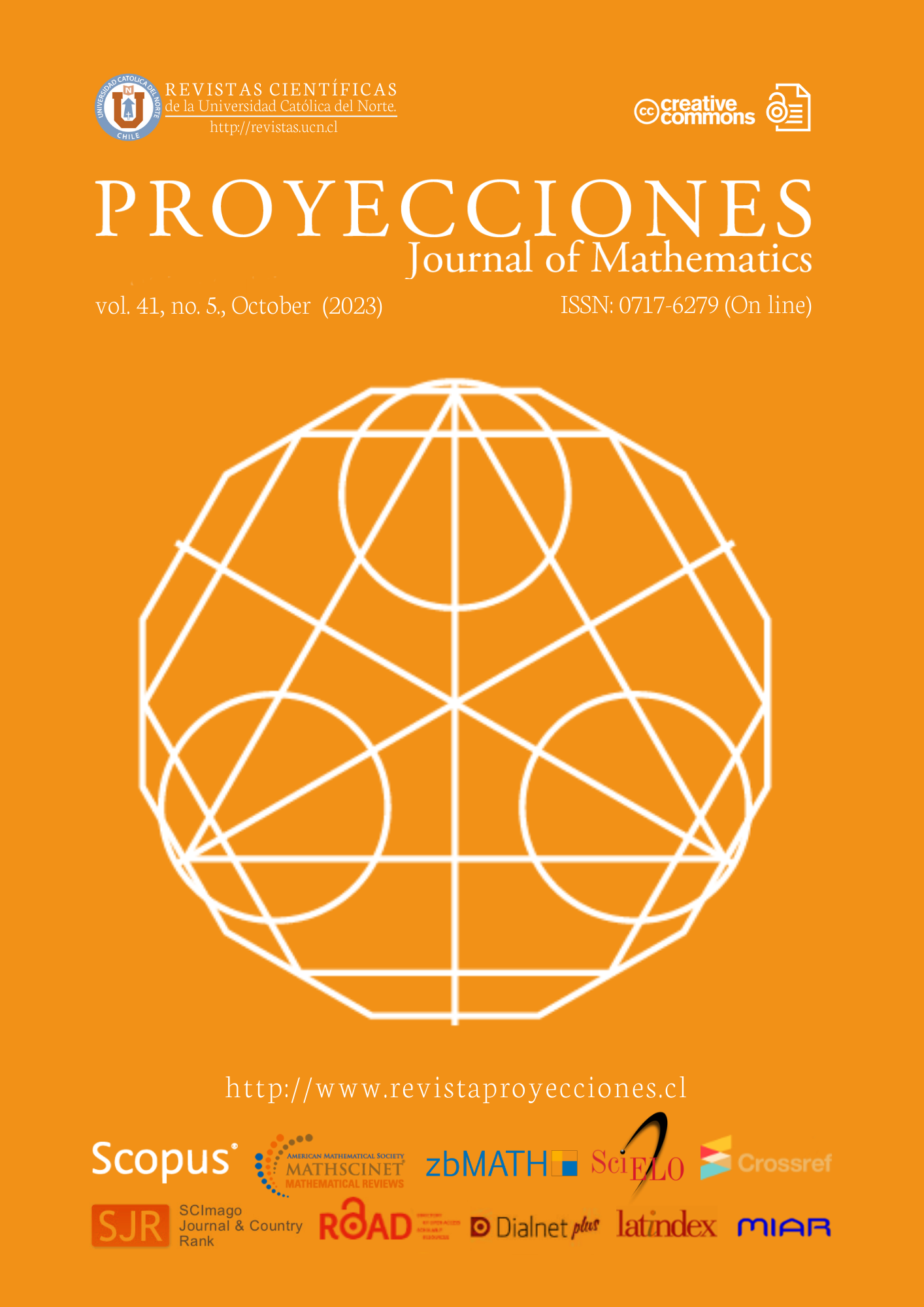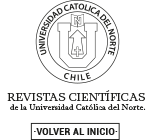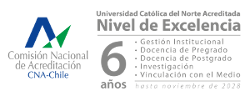On fuzzy congruence relation in residuated lattices
DOI:
https://doi.org/10.22199/issn.0717-6279-5359Keywords:
fuzzy relation, fuzzy equivalence relation, fuzzy congruence relation, residuated latticesAbstract
In this paper, we characterize some properties of fuzzy congruence relations and obtain a fuzzy congruence relation generated by a fuzzy relation in residuated lattices. For this purpose, two various types of fuzzy relations (regular and irregular) are introduced. In order to obtain a fuzzy congruence relation generated by an irregular fuzzy relation it must convert to a regular fuzzy relation.
References
J. Kim and D. Bae, “Fuzzy congruences in groups”, Fuzzy Sets and Systems, vol. 85, no. 1, pp. 115-120, 1997. https://doi.org/10.1016/0165-0114(95)00334-7
R. Bĕlohlávek, “Some properties of residuated lattices”, Czechoslovak Mathematical Journal, vol. 53, no. 1, pp. 161-171, 2003.
R. A. Borzooei, S. Khosravi Shoar and R. Ameri, “Some types of filters in MTL-algebras”, Fuzzy Sets and systems, vol. 187, no. 1, pp. 92-102, 2012. https://doi.org/10.1016/j.fss.2011.09.001
D. Busneag and D. Piciu, “A new approach for classification of filters in residuated lattices”, Fuzzy Sets and Systems, vol. 260, no. 1, pp. 121-130, 2015. https://doi.org/10.1016/j.fss.2014.07.022
D. Buşneag and D. Piciu, “Some types of filters in residuated lattices”, Soft Computing, vol. 18, pp. 825-837, 2014. https://doi.org/10.1007/s00500-013-1184-6
M. K. Chakraborty and M. Das, “Reduction of fuzzy strict order relations”, Fuzzy Sets and Systems, vol. 15, pp. 33-44, 1985. https://doi.org/10.1016/0165-0114(85)90014-4
A. Di Nola, “Boolean Products of BL-Algebras”, Journal of Mathematical Analysis and Applications, vol. 251, pp. 106-131, 2000. https://doi.org/10.1006/jmaa.2000.7024
F. Esteva and L. Godo, “Monoidal t-norm based logic Towards a logic for left-continuos t-norms”, Fuzzy Setes and System, vol. 124, pp. 271-288, 2001.https://doi.org/10.1016/S0165-0114(01)00098-7
S. Ghorbani and A. Hasankhani, “Fuzzy Convex Subalgebras of Commutative Residuated Lattices”, Iranian Journal of Fuzzy Systems, vol. 7, pp. 41-54, 2010. https://doi.org/10.22111/IJFS.2010.171
P. Hájek, Metamathematics of Fuzzy Logic. Dordrecht: Kluwer Academic Publisher, 1998.
M. Haveshki, A. Borumand Saeid and E. Eslami, “Some type of filters in BL-algebras”, Soft Computing, vol. 10, pp. 657-664, 2006. https://doi.org/10.1007/s00500-005-0534-4
S. Khosravi Shoar, R. A. Borzoeei, R. Moradian, “Fuzzy congruence relation generated by a fuzzy relation in vector spaces”, Journal of Intelligent and Fuzzy Systems, vol. 35, pp. 5635-5645, 2018. https://doi.org/10.3233/JIFS-17088
S. Khosravi Shoar, “Fuzzy normal congruence and fuzzy coset relation on group”, International Journal of Pure and Applied Mathematics, vol. 115, pp. 211-224, 2017. https://doi.org/10.12732/ijpam.v115i2.2
L. Lianzhen and L. Kaitaia, “Fuzzy Boolean and positive implicative filters of BL-algebras”, Fuzzy Sets and Systems, vol. 152, pp. 333-348, 2005. https://doi.org/10.1016/j.fss.2004.10.005
V. Murali, “Fuzzy equivalence relations”, Fuzzy Sets and Systems, vol. 30, pp. 155-163, 1989.https://doi.org/10.1016/0165-0114(89)90077-8
V. Murali, Fuzzy congruence relations, Fuzzy Sets and Systems, vol. 41, pp. 359-369, 1991. https://doi.org/10.1016/0165-0114(91)90138-G
M. Samhan, “Fuzzy congruences on semigroups”, Information Sciences, vol. 74, pp. 165-175, 1993. https://doi.org/10.1016/0020-0255(93)90132-6
E. Turunen, “Boolean deductive systems of BL-algebras”, Archive for Mathematical Logic, vol. 40, pp. 467-473, 2001. https://doi.org/10.1007/s001530100088
L. A. Zadeh, “Fuzzy sets”, Information and Control, vol. 8, pp. 338-353, 1965. https://doi.org/10.1016/S0019-9958(65)90241-X
Published
How to Cite
Issue
Section
Copyright (c) 2023 S. Khosravi Shoar, A. Borumand Saeid

This work is licensed under a Creative Commons Attribution 4.0 International License.
-
Attribution — You must give appropriate credit, provide a link to the license, and indicate if changes were made. You may do so in any reasonable manner, but not in any way that suggests the licensor endorses you or your use.
- No additional restrictions — You may not apply legal terms or technological measures that legally restrict others from doing anything the license permits.












